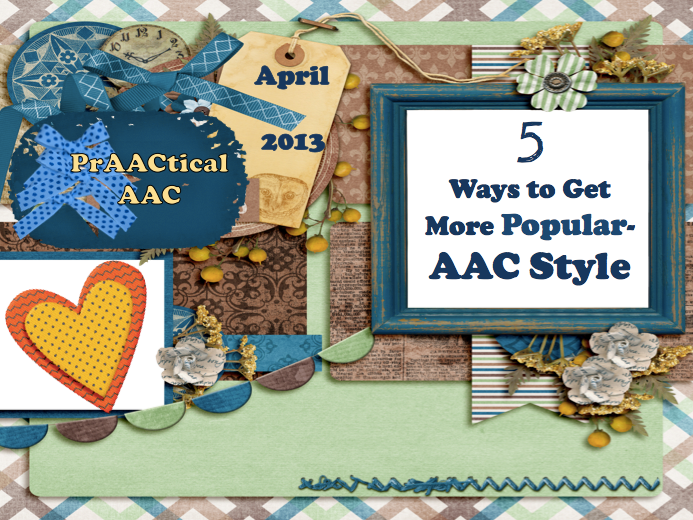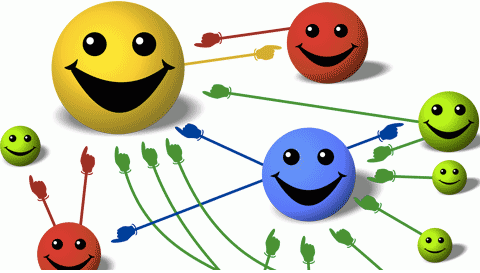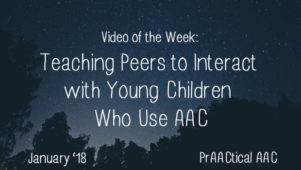5 Ways to Get More Popular- AAC Style

 Popularity may or may not be important to children or adults, but most of us would like to have some friends and at least some people we can share information with. From a facilitator’s point of view, we need AAC users to have conversations with a variety of people. The more prAACtice in conversational exchanges the better. We have learned (through research and clinical experience) that if we teach specific skills, communication partners are more likely to initiate and respond to AAC communication. Here are things to teach for ‘conversational’ popularity
Popularity may or may not be important to children or adults, but most of us would like to have some friends and at least some people we can share information with. From a facilitator’s point of view, we need AAC users to have conversations with a variety of people. The more prAACtice in conversational exchanges the better. We have learned (through research and clinical experience) that if we teach specific skills, communication partners are more likely to initiate and respond to AAC communication. Here are things to teach for ‘conversational’ popularity
1. Teach Partner Focused Questions
|
What’s up? |
|
How are you doing? |
|
How is your family? |
|
How are you feeling? |
|
What are you thinking? |
2. Teach Social/Participation Scripts
|
Attention Getters |
Starters |
Maintainers |
Turn Transfers |
Closings |
|
Let’s talk. |
Guess what? |
And next.. |
What’s your thoughts? |
That’s it. |
|
Come here. |
Let me tell you something. |
want a hint? |
Amazing right? |
See you later. |
|
Yo dude. |
You won’t believe what happened. |
Can you guess what happened next? |
It’s a super secret, you won’t tell anyone right? |
Enough chatter. |
|
Hey girls. |
Got something cool to tell you. |
Believe it or not… |
That’s amazing, what’s your thoughts? |
Can you find the next person who needs to hear. |
|
What’s up? |
Wanna hear a secret? |
honestly the next thing was the worst part. |
Your turn to say what you thought. |
See you later alligator. |
3. Teach generic small talk that continues the conversation or involves a generic partner focused question
|
That’s Awesome |
|
Great! |
|
Come on. |
|
Wow, very cool! |
|
No Way! |
4. Teach Personal Narratives, even for the beginning communicator.
5. Teach Peers the ‘Stay-Play-Talk’ strategy, so they can be responsive communication partners. (See Come Play with Me – Goldstein & Thiemann-Bourque)
Selected References
Jane Farrall (2011)- Wanna Hear Some Gossip? Slide Share
Filed under: PrAACtical Thinking
Tagged With: partner focused questions, peer training
This post was written by Robin Parker

